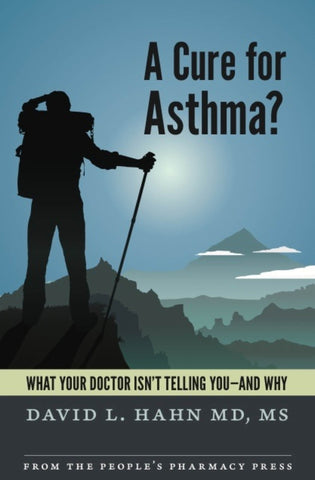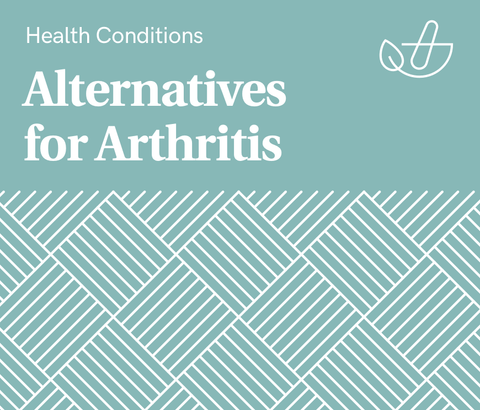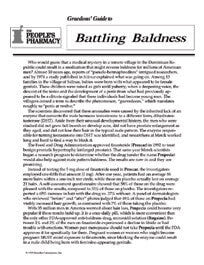Link to your individual collections by creating a new linklist in the Navigation section of the admin.
You can then have it appear here by choosing your new linklist under Customize Theme / Sidebar.

Show 1357: Revisiting Ventilation to Avoid Airborne Germs
According to the CDC, cases of COVID-19 have been rising in several parts of the country. Cases of hospitalization for COVID are also up. One way to protect ourselves from airborne germs like the SARS-CoV-2 virus is through better ventilation and air filtration. How well are we using these techniques?
Maximizing Ventilation to Avoid Airborne Germs:
The experience of the COVID-19 pandemic has shaped some scientists’ research. For Dr. Prasad Kasibhatla, the question of whether or not to teach in person in the fall of 2020 inspired him to put his knowledge of atmospheric chemistry into a model. By that time, it had become clear that viral particles could behave like pollutants, especially like aerosols floating around a room for hours. This was an important revision of the earliest conception of viruses primarily traveling in droplets that would fall to the ground within six feet. Dr. Kasibhatla used research by Dr. Linsey Marr and others to calculate how many hourly air exchanges would give a reasonable level of risk. That is, how many times an hour do you need to replace stale classroom air with fresh air? It turned out that the classrooms he taught in were adequately ventilated to keep that risk of inhaling viral particles relatively low.
How Well Can You Avoid Airborne Germs?
Most of us do not spend our days in well-ventilated classrooms. How can we tell if the bank, pharmacy, shoe store or taco joint we have just walked into has adequate ventilation? We have standards for outdoor air pollution, but only a few organizations, such as hospitals or high-tech manufacturing facilities, have standards they enforce for indoor air quality.
Benefits of Ventilation Have a Long History:
The idea of improving ventilation for better health goes back a long way. In the middle of the 19th century, even before Koch developed the germ theory of disease, Florence Nightingale was crusading for better ventilation in hospitals. She may not have had any information on aerosolized airborne germs, but she was very attentive to data. Her careful observations told her that well-ventilated sickrooms were far more conducive to healing. Why didn’t we remember those important lessons?
Evaluating the Likelihood of Encountering Airborne Germs:
The primary source of viral aerosols, whether SARS-CoV-2, influenza or respiratory syncytial virus (RSV), is an infected person breathing them out. That’s why the fewer people sharing your air, the safer you may be. But how would you know how many people are breathing into your air? That is where the carbon dioxide monitor can be useful.
Using a Carbon Dioxide Monitor:
When people breathe, the exhalation is rich in carbon dioxide. Outdoors, that breath gets wafted away and diluted quickly in the fresh air. Inside, it may hang around and insinuate itself into every corner of the room. Measuring the level of carbon dioxide in the room will tell you how much of the air is fresh, and how much is being re-breathed. Outdoors, levels of carbon dioxide are typically around 400 ppm (parts per million). When indoor levels start to rise beyond 800 to 1,000 ppm, it indicates that there is less fresh air than you might prefer. For the calculation that Dr. Kasibhatla does, subtract 400 from the CO2 monitor reading, then divide that by 400. Thus a reading of 800 - 400 = 400. Divide that by 400 and you get 1. So 1 percent of the air you are breathing has been breathed by someone else. That is not too alarming. As the reading rises, it can serve as a red flag that the ventilation in the room needs attention.
High-risk areas may also need extra filtration with HEPA (high-efficiency particulate-arresting) filters. In fact, if we want to protect ourselves from infection with airborne germs, we might consider layered protection in risky circumstances: start by maintaining at least six feet of distance, add masking, improve ventilation and filtration and, in some situations, provide mass testing. Schools that employed these approaches during the pandemic often minimized the spread of disease.
Rethinking Air Quality and Infectious Disease:
We spoke with aerosol expert Dr. José Jimenez to learn more about how to avoid airborne germs. He was able to explain the misunderstanding about the six-foot rule. (Dilution rather than gravity is responsible for droplets becoming less noticeable as you get farther away from a source.) In addition, he described how ultraviolet radiation might be used to help against pathogens. Years ago, scientists demonstrated that UV radiation could reduce transmission of the measles virus, another virus that often travels as an aerosol. However, using UV light to kill viruses can create some varieties of air pollution. As a result, ultraviolet disinfection may be useful, but it is not universal.
Dr. Jimenez also endorsed the Corsi-Rosenthal box, a home-made filtration system that is both inexpensive and effective. You can learn more about it here, in our interview with Dr. Richard Corsi.
This Week's Guests:
Prasad Kasibhatla, PhD, is Professor of Environmental Chemistry and Senior Associate Dean of Research and Doctoral Programs at the Nicholas School of the Environment at Duke University.
https://nicholas.duke.edu/people/faculty/kasibhatla

José Jimenez, PhD, is Distinguished Professor of Chemistry at the University of Colorado, Boulder. He is also an Institute Fellow with CIRES, the Cooperative Institute for Research in Environmental Sciences.
The podcast this week contains Dr. Jimenez’s thoughts on how and when masks can be useful.




